If you want to know about the laurie baker or norman foster or staircase design, please click the link.
Introduction
Minimalist architecture is a design approach that focuses on the use of minimal elements and a reduction in ornamentation to create a clean, simple, and functional aesthetic. It is characterized by the use of geometric forms, neutral colors, and natural materials, with an emphasis on maximizing natural light and space.
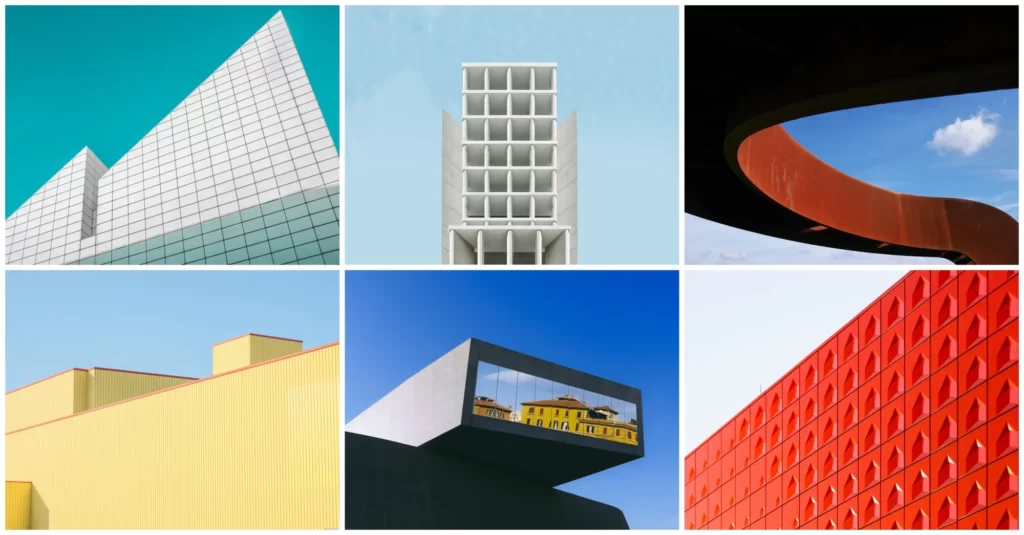
Brief history of minimalist architecture
Minimalist architecture emerged in the 20th century as a response to the ornate and decorative styles that preceded it, such as Art Nouveau and Art Deco. The movement was heavily influenced by the work of the Bauhaus School in Germany, which emphasized functionality and simplicity in design.
In the 1960s, minimalist architecture gained prominence in the United States through the work of architects such as Mies van der Rohe and Philip Johnson. These architects embraced the use of industrial materials such as steel and glass, and created minimalist buildings with simple lines and open spaces.
In the 1980s, the minimalist movement expanded to include a wider range of materials and design elements, with architects such as Tadao Ando and John Pawson creating minimalist buildings that emphasized the use of natural materials such as wood and stone.
Importance of minimalist architecture in contemporary design
Minimalist architecture continues to be an important influence in contemporary design, particularly in the fields of interior design and urban planning. The focus on simplicity and functionality has become increasingly relevant in an era of sustainability and eco-friendliness, and minimalist design principles are often used to create buildings that are energy-efficient and environmentally responsible.
Moreover, minimalist architecture is often seen as a way to promote a sense of calm and tranquility in an increasingly chaotic world. Its emphasis on natural light and open spaces creates a sense of openness and serenity, and its clean lines and neutral colors can help to reduce visual clutter and promote mental clarity.
1) Characteristics of Minimalist Architecture
Minimalist architecture is a design approach characterized by simplicity, clean lines, and a focus on functionality. Some key characteristics of minimalist architecture include:
i) Simplistic design:
Minimalist architecture emphasizes a simplified and pared-down design approach that eliminates unnecessary details and ornamentation. This often results in buildings that are sleek, uncluttered, and focused on function over form.
ii) Use of natural materials:
Natural materials such as wood, stone, and glass are commonly used in minimalist architecture. These materials are often left in their natural state or minimally processed to showcase their inherent beauty and texture.
iii) Clean lines and geometric shapes:
Minimalist architecture is characterized by clean, simple lines and geometric shapes. Rectangular forms and sharp angles are common, and curves and ornamentation are avoided.
iv) Neutral colors and minimal ornamentation:
Minimalist architecture typically employs a limited color palette of neutral hues such as white, black, and grey. Ornamentation is also kept to a minimum, with simple shapes and textures taking precedence over decorative details.
v) Maximization of natural light and space:
Minimalist architecture often emphasizes the use of natural light and open spaces to create a sense of airiness and spaciousness. Large windows, skylights, and open floor plans are common features, and walls and barriers are minimized to promote a sense of flow and connectivity.
Together, these characteristics create a minimalist aesthetic that is both functional and beautiful, and which emphasizes the essential elements of design while eliminating unnecessary distractions.
2) Benefits of Minimalist Architecture
Minimalist architecture offers several benefits that make it an increasingly popular design approach in contemporary architecture. Here are some of the key benefits of minimalist architecture:
- Reduces clutter and promotes a sense of calm: Minimalist architecture’s emphasis on simplicity and minimalism can reduce visual clutter and create a sense of calm and tranquility. The minimalist aesthetic promotes a serene atmosphere that can be beneficial for mental and emotional well-being.
- Promotes sustainability and eco-friendliness: Minimalist architecture often prioritizes sustainability and eco-friendliness. The use of natural materials and the maximization of natural light and space can help reduce energy consumption and minimize the environmental impact of a building.
- Enhances functionality and efficiency: The focus on functionality and efficiency in minimalist architecture can result in buildings that are optimized for their intended use. By eliminating unnecessary design elements and emphasizing usability, minimalist architecture can help create spaces that are practical, efficient, and effective.
- Promotes creativity and productivity: Minimalist architecture can promote creativity and productivity by creating a clean, uncluttered space that allows for focus and inspiration. The minimalist aesthetic can help stimulate the mind and encourage creative thinking, leading to increased productivity and innovation.
Overall, minimalist architecture can provide a range of benefits for both individuals and society as a whole, from improving mental well-being to promoting sustainability and efficiency. Its emphasis on simplicity and functionality can create beautiful, inspiring spaces that are optimized for their intended use.
3) Examples of Minimalist Architecture
There are many examples of minimalist architecture from around the world, spanning different types of buildings, styles, and time periods. Here are a few notable examples:
Case Study House 22 by Pierre Koenig:
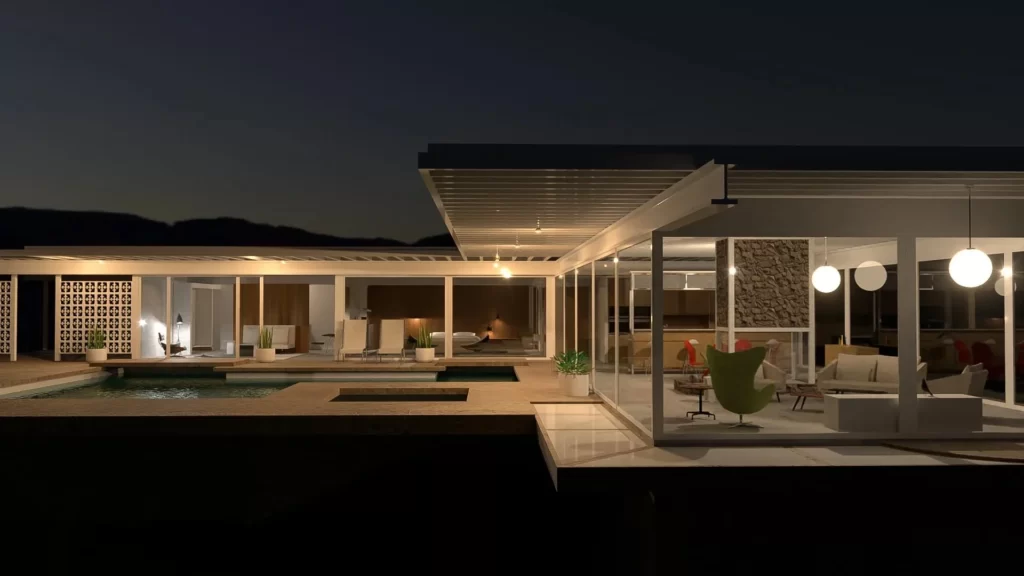
Built in 1959, Case Study House 22 is an iconic example of minimalist architecture. The steel-framed house features a simple, rectangular design with large glass walls that maximize natural light and provide stunning views of the surrounding landscape.
The use of industrial materials and clean lines creates a sleek and modern aesthetic, while the open floor plan promotes a sense of spaciousness and flow.
Farnsworth House by Ludwig Mies van der Rohe:

Built in 1951, the Farnsworth House is a prime example of minimalist architecture in its purest form. The one-room glass box is elevated on steel beams, allowing for an uninterrupted view of the surrounding landscape. The interior features a simple, open plan with minimal furnishings, emphasizing the importance of space and natural light.
Tadao Ando’s Church of Light:
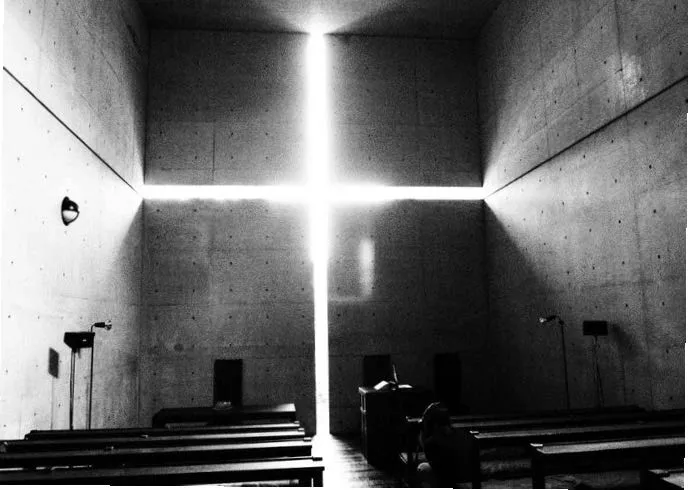
Completed in 1989, the Church of Light is a minimalist masterpiece by Japanese architect Tadao Ando. The concrete structure features clean lines, sharp angles, and a simple, rectangular form.
The interior is illuminated by a cross-shaped cutout in the concrete, which allows natural light to filter in and create a dramatic interplay of light and shadow.
John Pawson’s Calvin Klein flagship store in New York:
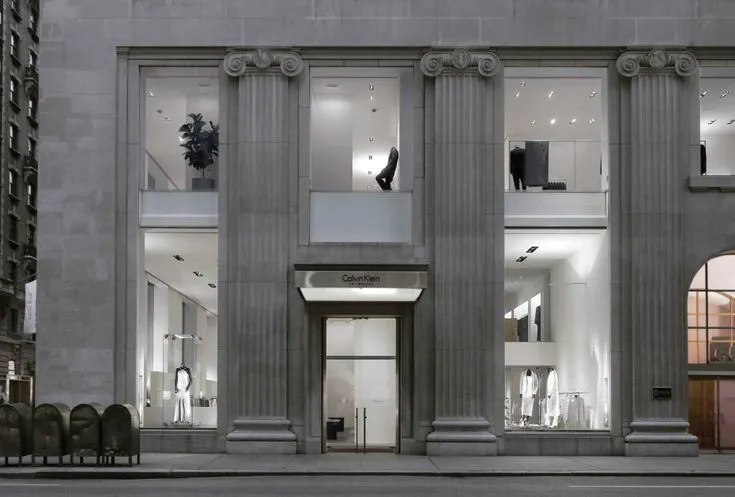
The minimalist aesthetic is not limited to residential architecture, as demonstrated by John Pawson’s Calvin Klein flagship store in New York. Completed in 2017, the store features a minimalist design with a limited color palette and clean lines.
The use of natural materials such as marble and oak creates a warm and inviting atmosphere, while the open layout promotes a sense of spaciousness and ease of movement.
These examples showcase the versatility and timelessness of minimalist architecture, as well as its ability to create beautiful and functional spaces that enhance our daily lives.
4) Minimalist Interior Design
The similarities and differences between minimalist architecture and interior design:
Similarities:
- Both emphasize simplicity: Minimalism is the defining characteristic of both minimalist architecture and interior design. Both place a premium on simplicity and minimalism, with an emphasis on clean lines, uncluttered spaces, and pared-down design.
- Both prioritize functionality: Both minimalist architecture and interior design prioritize functionality and usability over aesthetics. In minimalist design, every element has a clear and practical purpose, and unnecessary ornamentation is eliminated.
Differences:
- Scale: The main difference between minimalist architecture and interior design is scale. While minimalist architecture refers to the design and construction of buildings and structures, minimalist interior design pertains to the design and decoration of the interior spaces of those buildings.
- Materials: Another difference between minimalist architecture and interior design is the materials used. While minimalist architecture often employs industrial materials such as steel and glass, minimalist interior design may incorporate softer materials such as wood or fabrics.
Key features of minimalist interior design:
- Neutral color palette: Minimalist interior design typically features a limited color palette of neutral hues such as white, black, and grey. This creates a calming, understated atmosphere.
- Simple furniture: Minimalist interior design favors furniture with clean lines and simple forms. The furniture is often functional and practical, without unnecessary ornamentation.
- Uncluttered spaces: Minimalist interior design prioritizes open spaces and uncluttered surfaces. This creates a feeling of spaciousness and promotes relaxation.
- Natural light: Minimalist interior design maximizes natural light, often through large windows or skylights. This can create a bright, inviting space and promote a sense of well-being.
- Minimal accessories: Minimalist interior design avoids excessive ornamentation and decor. Instead, a few carefully chosen accessories can serve as focal points and enhance the overall aesthetic.
Benefits of minimalist interior design:
- Reduces stress: Minimalist interior design can create a calming atmosphere that reduces stress and promotes relaxation.
- Enhances focus: Minimalist interior design can help eliminate distractions, promoting focus and concentration.
- Maximizes space: By reducing clutter and maximizing open spaces, minimalist interior design can create a sense of spaciousness and airiness.
- Simplifies life: Minimalist interior design can help simplify life by reducing the amount of stuff in our homes and promoting a more streamlined, minimalist lifestyle.
Overall, minimalist interior design can help create a beautiful, functional, and peaceful living space that enhances our quality of life.
5) Minimalist Architecture in Urban Settings
Some points about the use and benefits of minimalist architecture in urban areas:
Use of minimalist architecture in urban areas:
- Minimalist architecture can be used in urban areas to create modern, sleek buildings that stand out in a crowded cityscape.
- The use of simple, clean lines and geometric shapes can create a sense of order and balance in busy, chaotic urban environments.
- Minimalist architecture can be used to make the most of limited urban space, creating efficient and functional structures that maximize usable space.
Benefits of minimalist architecture in urban settings:
- Minimalist architecture can promote sustainable urban development by prioritizing eco-friendliness and energy efficiency.
- Minimalist architecture can help reduce the carbon footprint of urban buildings by using natural materials, reducing energy consumption, and minimizing waste.
- Minimalist architecture can help promote a sense of calm in busy urban environments, promoting mental well-being and reducing stress.
Examples of minimalist architecture in urban areas:
- The Seagram Building in New York City: Designed by Ludwig Mies van der Rohe and completed in 1958, the Seagram Building is a prime example of minimalist architecture in an urban setting. The sleek, modernist tower is clad in bronze-tinted glass and features a simple rectangular shape with clean lines and minimal ornamentation.

- The Barcelona Pavilion in Barcelona, Spain: Designed by Ludwig Mies van der Rohe and completed in 1929, the Barcelona Pavilion is a modernist masterpiece that showcases minimalist architecture in an urban park setting. The simple, geometric design features clean lines, natural materials, and a limited color palette, creating a serene and contemplative atmosphere.
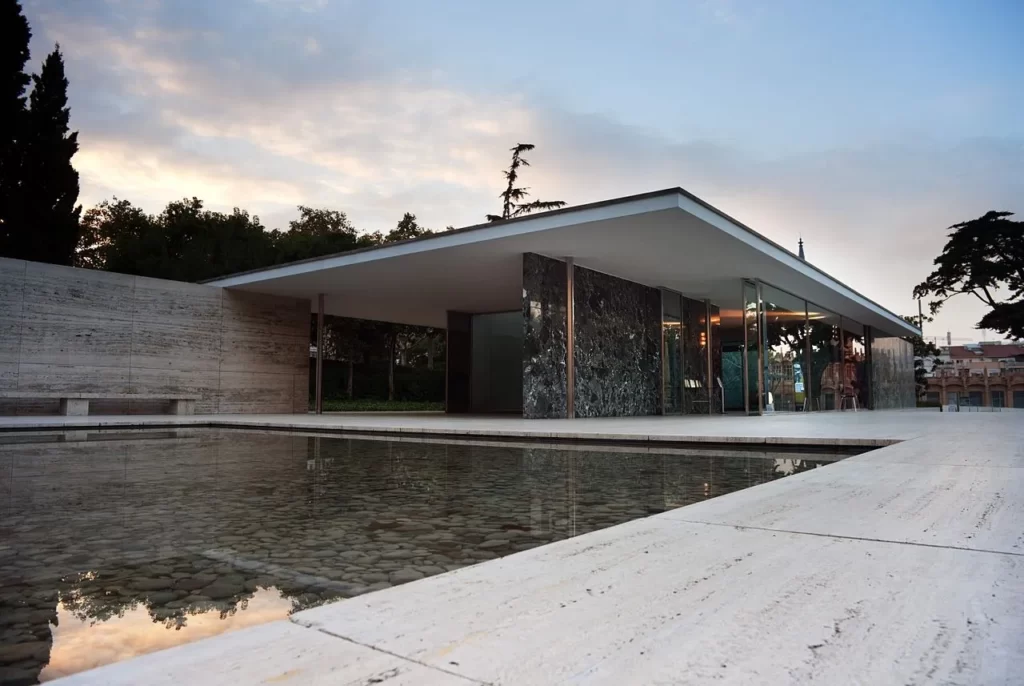
- The Farnsworth House in Plano, Illinois: Designed by Ludwig Mies van der Rohe and completed in 1951, the Farnsworth House is a minimalist masterpiece that sits on a spacious site surrounded by trees. The simple, one-room glass box features a clean, open design with minimal ornamentation and a focus on natural light and space.

- The Tokyo International Forum in Tokyo, Japan: Designed by Rafael Vinoly and completed in 1996, the Tokyo International Forum is a minimalist urban structure that features a sleek, curved glass roof and a spacious interior atrium. The building’s minimalist design creates a sense of calm and tranquility in the midst of a bustling city.
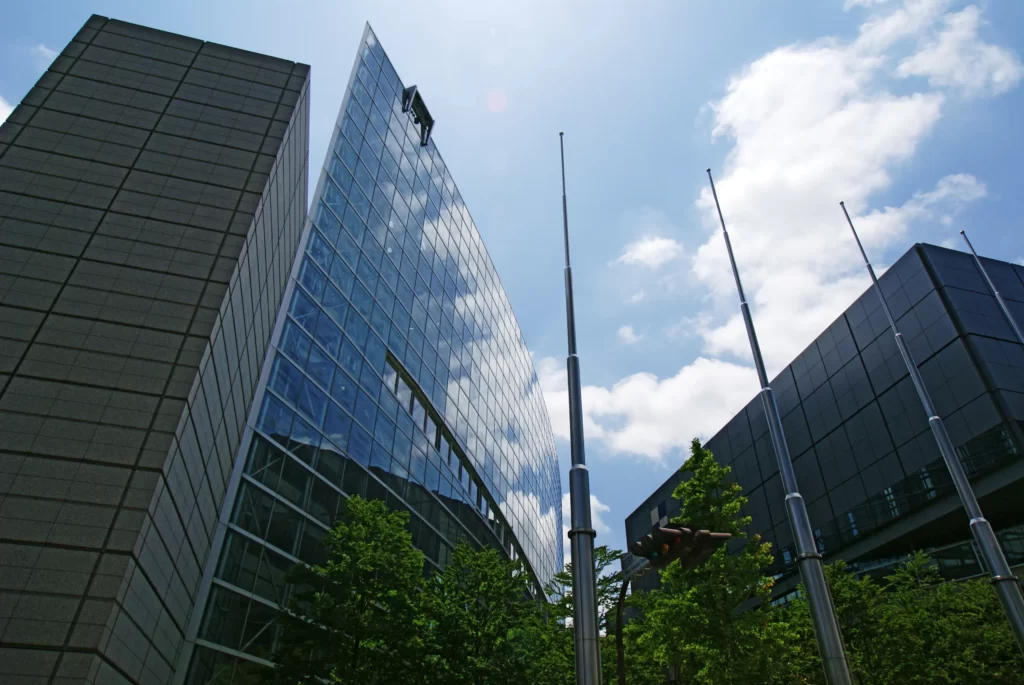
6) Challenges of Minimalist Architecture
When designing minimalist architecture, it’s important to balance functionality with aesthetics, ensure proper use of space, and meet the needs of clients while maintaining minimalist principles. Here are some key points to consider:
Balancing functionality with aesthetics:
- Functionality and aesthetics are equally important in minimalist architecture. A building should not only look beautiful but also serve its intended purpose efficiently.
- A minimalist building should be designed with a clear purpose in mind, and every design element should contribute to that purpose.
- It’s important to consider the building’s function when designing its layout, materials, and finishes.
Ensuring proper use of space:
- One of the key principles of minimalist architecture is maximizing the use of space. A minimalist building should not have any wasted or unused space.
- It’s important to carefully plan the layout of a minimalist building to ensure that every square foot is used efficiently.
- Creating multi-functional spaces can help maximize the use of space in a minimalist building.
Meeting the needs of clients while maintaining minimalist principles:
- While designing a minimalist building, it’s important to understand the needs of the client and their intended use of the space.
- It’s essential to strike a balance between the client’s needs and maintaining the principles of minimalist design.
- A minimalist building should be designed to meet the client’s functional requirements while also embodying the minimalist aesthetic.
In summary, designing minimalist architecture requires striking a balance between functionality and aesthetics, ensuring proper use of space, and meeting the needs of clients while maintaining minimalist principles. By carefully considering these factors, designers can create beautiful and efficient buildings that embody the principles of minimalism.
7) Conclusion
- Minimalist architecture is characterized by simplicity, clean lines, use of natural materials, neutral colors, and maximizing natural light and space.
- Minimalist architecture promotes a sense of calm, enhances functionality and efficiency, and promotes creativity and productivity.
- Examples of notable minimalist buildings include Case Study House 22, Farnsworth House, Church of Light, and Calvin Klein flagship store in New York.
- Minimalists interior design shares many features with minimalist architecture, such as simplicity, use of natural materials, and reduction of clutter.
- Minimalist architecture can be used in urban areas to create modern, eco-friendly, and efficient buildings that stand out in crowded cityscapes.
Minimalist architecture and its significance in contemporary design
Minimalist architecture is an important trend in contemporary design that emphasizes simplicity, functionality, and sustainability. By minimizing ornamentation, reducing waste, and promoting the use of natural materials, minimalist architecture creates buildings that are not only aesthetically pleasing but also efficient and eco-friendly.
In an increasingly crowded and chaotic world, minimalist architecture provides a sense of calm and order that can enhance well-being and promote creativity.
As we continue to seek ways to reduce our impact on the environment and make the most of limited resources, minimalist architecture will likely play an increasingly important role in shaping the buildings and spaces of the future.